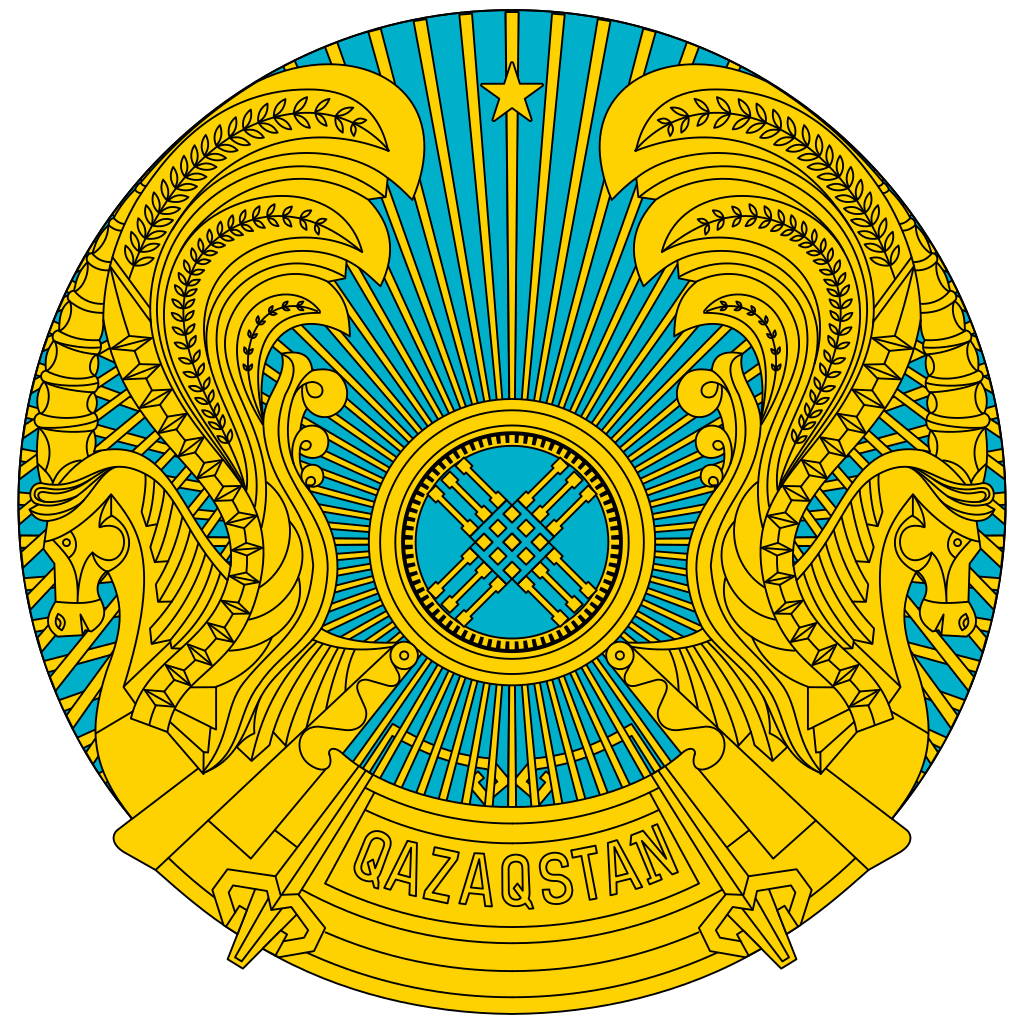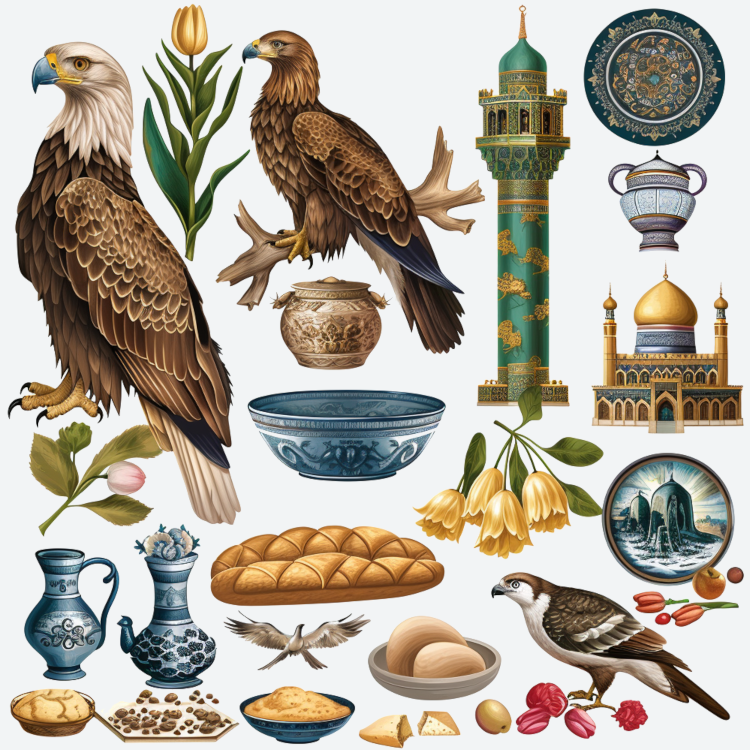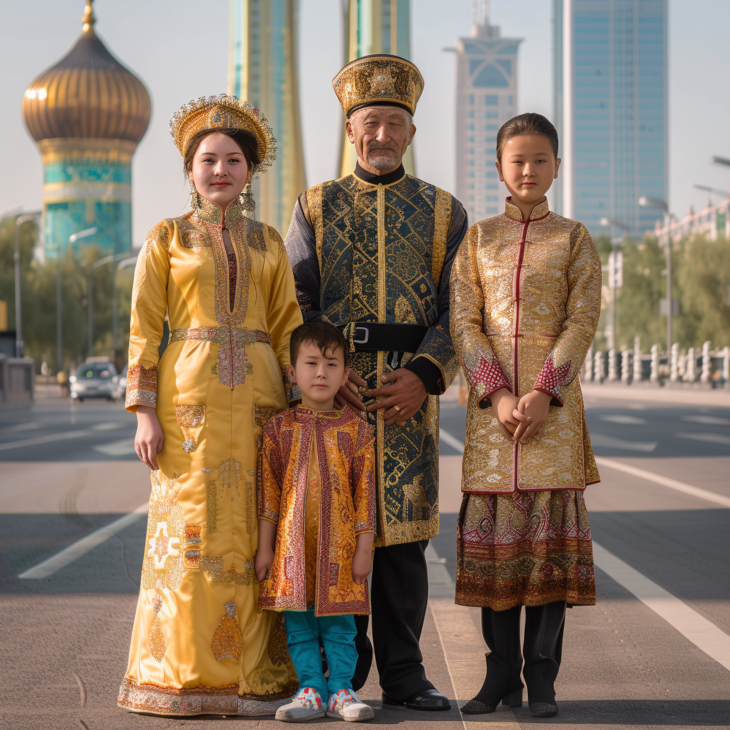About KZ

Location
Kazakhstan is the world's largest landlocked country, located in Central Asia and Eastern Europe. It is bordered by Russia to the north, China to the east, Kyrgyzstan, Uzbekistan, and Turkmenistan to the south, and the Caspian Sea to the west.
Capital
The capital city of Kazakhstan is Nur-Sultan (formerly known as Astana).
Population
As of the latest estimates, Kazakhstan has a population of approximately 19.3 million people.
Area
Kazakhstan covers a total land area of about 2.7 million square kilometers (1.05 million square miles), making it the ninth largest country in the world by land area.
Official Language
The official language of Kazakhstan is Kazakh, a Turkic language, while Russian is also widely spoken and used in government and business.
Government
Kazakhstan is a presidential republic, with the President serving as the head of state and government. The President is elected by popular vote for a maximum of two five-year terms.
Independence
Kazakhstan declared its independence from the Soviet Union on December 16, 1991.
Currency
The currency of Kazakhstan is the Kazakhstani tenge (KZT).
Economy
Kazakhstan has a mixed economy with a strong focus on natural resources, particularly oil, natural gas, and minerals. It is one of the world's leading producers of uranium, and it also has significant agricultural and industrial sectors. The country has pursued economic diversification efforts, including investments in infrastructure, technology, and renewable energy.
Culture
Kazakhstan has a rich cultural heritage influenced by its nomadic and Turkic roots, as well as its history of Russian and Soviet influence. Traditional Kazakh culture includes music, dance, cuisine, and crafts, such as felt-making and embroidery. The country is also known for its hospitality and celebration of national holidays and festivals.
Religion
The majority of the population in Kazakhstan is Muslim, predominantly Sunni, but there are also significant Russian Orthodox Christian and other religious communities.
Landscapes
Kazakhstan's landscapes are diverse and include vast steppes, deserts, mountains, and lakes. The country is home to the Altai Mountains, the Caspian Sea, and the expansive Kazakh Steppe, which is one of the largest dry grassland regions in the world.
Transportation
Kazakhstan has an extensive transportation network, including railways, highways, and air travel. The country serves as a key transit hub for trade and transportation between Europe and Asia.

National Items of Kazakhstan
Golden Eagle
The Golden Eagle (Aquila Chrysaetos) is the national bird of Kazakhstan. Known for its powerful flight and keen eyesight, it symbolizes strength, freedom, and the country's rich natural heritage. The Golden Eagle is also associated with the traditional Kazakh practice of eagle hunting.
Steppe Eagle
The Steppe Eagle (Aquila nipalensis) is another significant bird in Kazakhstan. It represents the vast steppe landscapes and the country's commitment to wildlife conservation.
Tulip
The Tulip is considered one of the national flowers of Kazakhstan. Originating in Central Asia, it symbolizes the region's natural beauty and rich flora.
Snow Leopard
The Snow Leopard (Panthera uncia) is a significant symbol of Kazakhstan. Known for its elusive nature and majestic presence, it represents the country's commitment to wildlife conservation and the protection of endangered species.
Apple
The apple, particularly the wild apple (Malus sieversii), is a significant fruit in Kazakhstan. The city of Almaty, formerly Alma-Ata, means "father of apples," and the fruit symbolizes the country's agricultural heritage and natural abundance.
Dombra
The Dombra is a traditional Kazakh-stringed musical instrument. It symbolizes the rich musical heritage and cultural identity of Kazakhstan.
Yurt
The Yurt (ger) is a traditional portable dwelling used by the nomadic people of Central Asia. It symbolizes the nomadic heritage, cultural traditions, and the hospitality of the Kazakh people.
Baursak
Baursak is a traditional Kazakh fried dough, often served during celebrations and special occasions. It represents the rich culinary traditions and hospitality of Kazakhstan.
Bayterek Tower
The Bayterek Tower in Nur-Sultan (formerly Astana) is an iconic symbol of modern Kazakhstan. It represents the country's growth, aspirations, and architectural achievements.
Charyn Canyon
Charyn Canyon, often referred to as the "Grand Canyon of Kazakhstan," is a natural wonder. It symbolizes the country's stunning landscapes and natural beauty.
Golden Warrior
The Golden Warrior, also known as the Golden Man, is an archaeological symbol of Kazakhstan. Discovered in the Issyk kurgan, it represents the rich historical and cultural heritage of the country.
Kazakh National Dress
The traditional Kazakh dress, including the chapan (coat) and saukele (headdress), symbolizes the cultural heritage and traditional attire of the Kazakh people.

This anthem celebrates Kazakhstan's independence, unity, and pride while expressing love and dedication to the country and its people.
The national anthem of Kazakhstan is called "Meniñ Qazaqstanım" in Kazakh, which translates to "My Kazakhstan" in English. Here are the lyrics in Kazakh along with an English translation:
Менің қазақстаным, тәуелсіз елім,
Сенің ең сүйікті елің, елім!
Бірлігі жарасқан, туған жерім,
Менің еркін, елім, еркін!
Қарсы алғандағы еркіндік сөзімізді,
Айтар еліме көктемді қоюымыз.
Ұрпақ мұрасына тап бірлік пен ұстам,
Қазақстаным, елім, еркін!
Табын ғана жоғары, жырықтық маңын,
Құдіреті шешен, ұлы даланым!
Біздің еркініміздің қазақтық дамуын,
Қазақстаным, елім, еркін!
My Kazakhstan, my native land,
My love and my aspirations,
You are always with me, in my heart,
My free and independent land!
We will glorify you, with deeds and words,
We will respond to your call,
We are dedicated to the great cause of unity,
My Kazakhstan, my land, my independence!
You are the pride of the people, the land of abundance,
Your power has opened the way for us,
We will increase your wealth and glory,
My Kazakhstan, my land, my independence!


